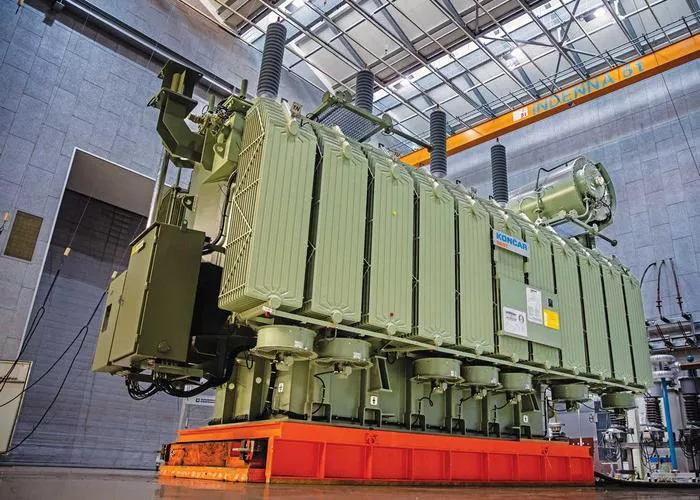Transformers play a crucial role in the transmission and distribution of electrical power. Among various transformer types, On-Load Tap Changer (OLTC) transformers are widely used to regulate voltage levels without interrupting the power supply. This article provides a detailed explanation of OLTC transformers, their working principles, applications, advantages, and maintenance requirements.
What is an OLTC Transformer
An On-Load Tap Changer (OLTC) transformer is a type of transformer equipped with a tap changer mechanism that allows for voltage regulation while the transformer remains in operation. This feature ensures stable voltage supply and reduces fluctuations that could affect sensitive electrical equipment.
Components of an OLTC Transformer:
Core and Windings: The main structure, similar to any transformer, consists of a magnetic core and primary/secondary windings.
Tap Changer Mechanism: This allows for adjustment of the transformer turns ratio without de-energizing the transformer.
Transition Resistors or Reactors: These help in reducing arcing and wear when switching between tap positions.
Drive Mechanism: It controls the movement of the tap changer contacts.
Oil or Vacuum Chamber: Helps in insulation and arc suppression during tap changing.
Working Principle of OLTC Transformers
OLTC transformers adjust voltage levels by changing the turns ratio of the windings. The tap changer moves between different tap positions while the transformer remains connected to the load, ensuring continuous power delivery.
Basic Working Process:
Voltage Sensing: The voltage is monitored, and if it deviates from the desired range, the tap changer is activated.
Tap Selection: The drive mechanism shifts the contacts to a new tap position to alter the turns ratio.
Transition Process: To prevent arcing, resistors or reactors momentarily bridge the old and new tap positions.
Completion: The new connection is established, stabilizing the output voltage.
Types of Tap Changers in OLTC Transformers
OLTC transformers can have different types of tap changers, primarily classified into:
Resistor-Type OLTC: Uses resistors to limit circulating currents during switching.
Reactor-Type OLTC: Uses reactors for smoother transitions, often preferred in high-voltage applications.
Vacuum OLTC: Uses vacuum interrupters to reduce wear and enhance reliability.
Advantages of OLTC Transformers
Continuous Voltage Regulation: Provides stable voltage output without power interruption.
Enhanced Power Quality: Reduces voltage fluctuations, benefiting sensitive electrical systems.
Improved Grid Stability: Helps maintain proper voltage levels in power transmission networks.
Efficiency Improvement: Optimizes transformer performance by adjusting voltage levels dynamically.
Applications of OLTC Transformers
OLTC transformers are extensively used in:
Power Generation Plants: Regulate voltage levels at generating stations.
Transmission and Distribution Networks: Maintain stable voltages across transmission lines.
Industrial Facilities: Ensure a constant voltage supply for machinery and production processes.
Renewable Energy Systems: Manage voltage variations from wind and solar power sources.
Railway Electrification: Maintain voltage levels in railway traction networks.
Maintenance and Challenges
Proper maintenance of OLTC transformers is essential for long-term reliability and efficiency. Key maintenance activities include:
Oil Filtration and Testing: Ensuring insulation oil remains in good condition.
Contact Inspection and Replacement: Preventing excessive wear and contact degradation.
Monitoring for Overheating and Arcing: Identifying potential failures before they escalate.
Control System Checks: Ensuring proper operation of voltage regulation mechanisms.
Common challenges associated with OLTC transformers include:
Mechanical Wear and Tear: Due to frequent switching.
Oil Contamination: Leading to reduced insulation properties.
Arcing and Contact Degradation: Affects switching performance over time.
Conclusion
OLTC transformers are essential components in modern power systems, offering dynamic voltage regulation while ensuring uninterrupted operation. Their ability to manage voltage variations enhances power quality and system stability across various applications. Regular maintenance and technological advancements continue to improve the efficiency and lifespan of OLTC transformers, making them indispensable in power transmission and distribution networks.

